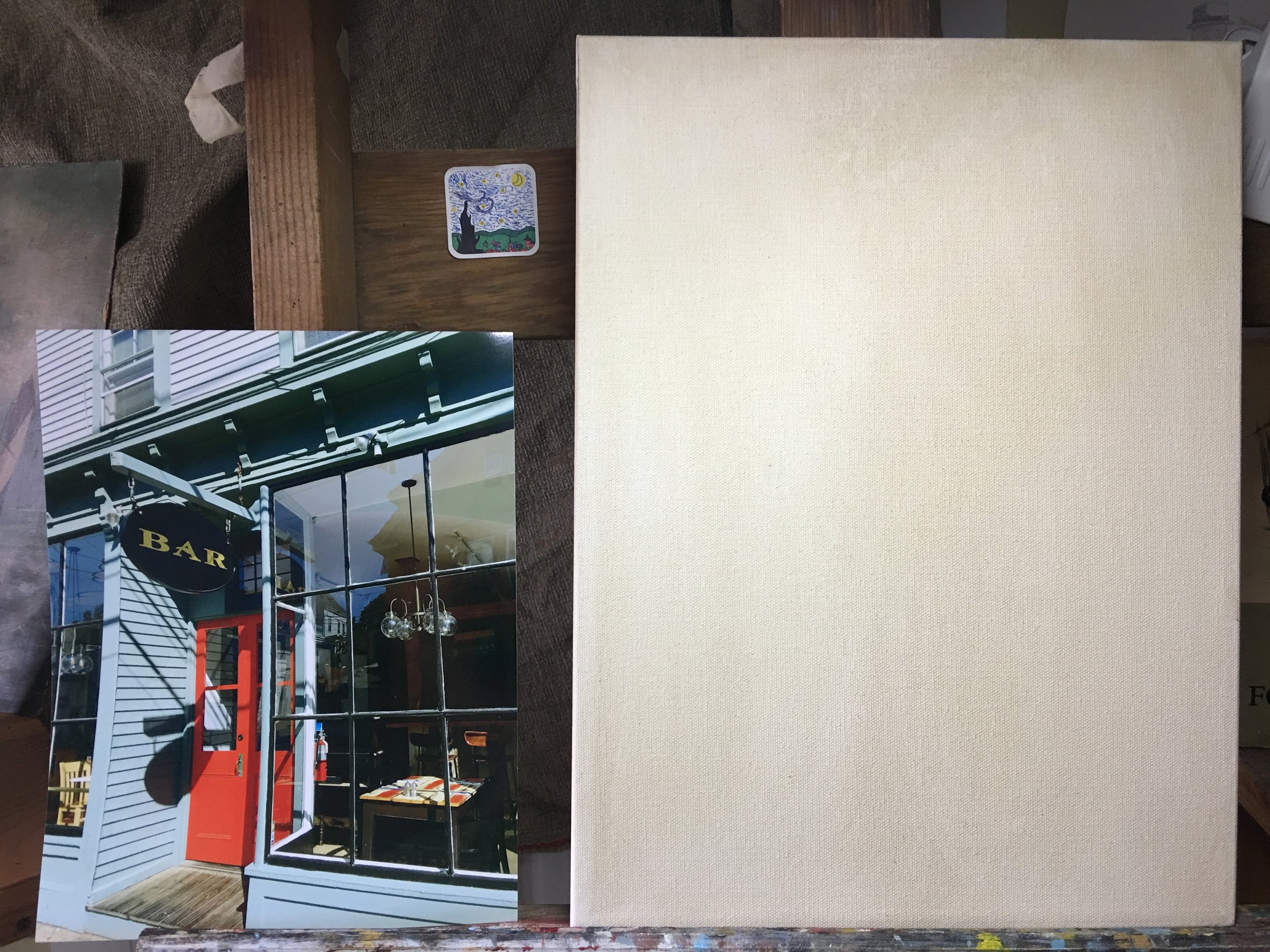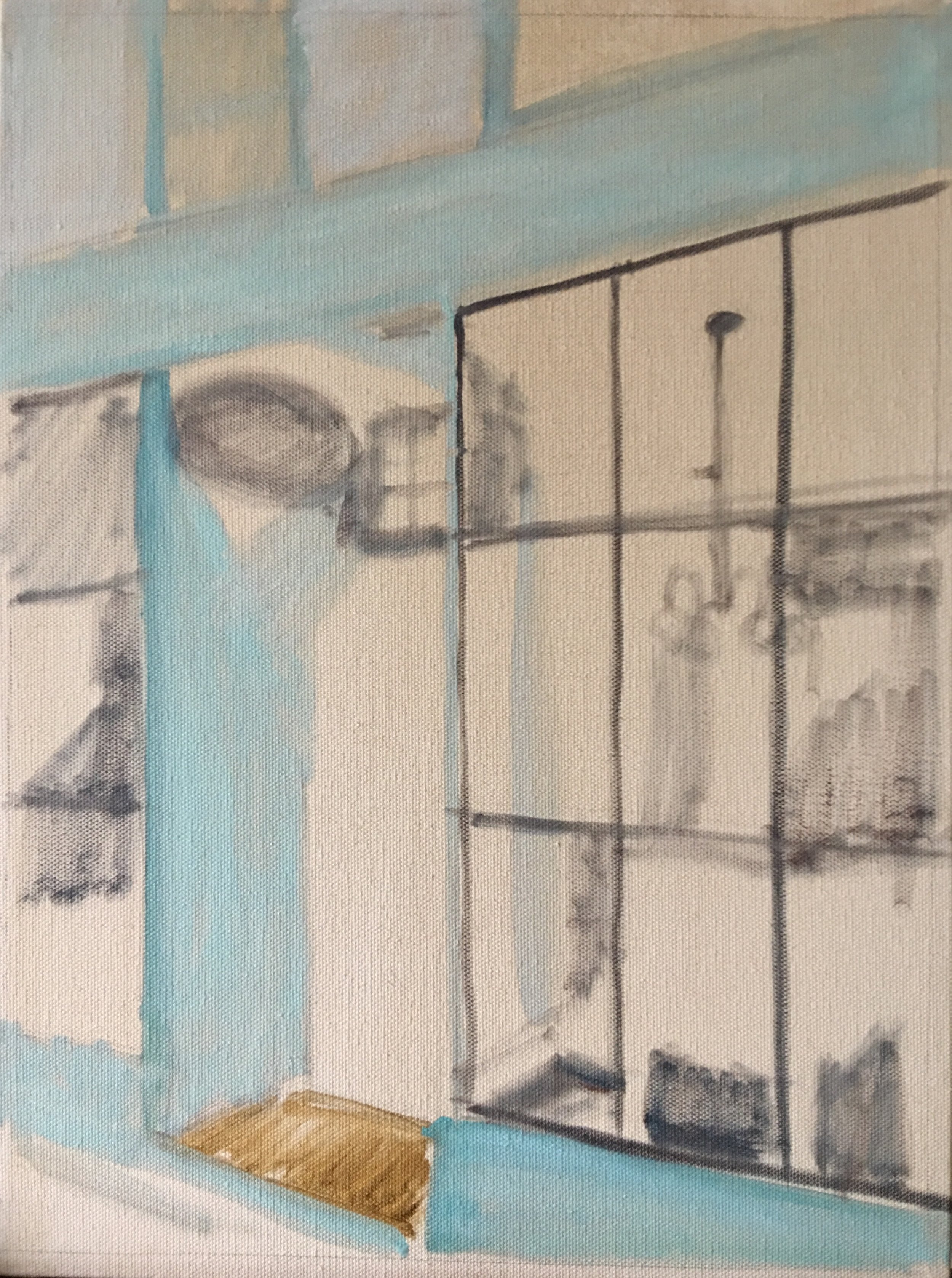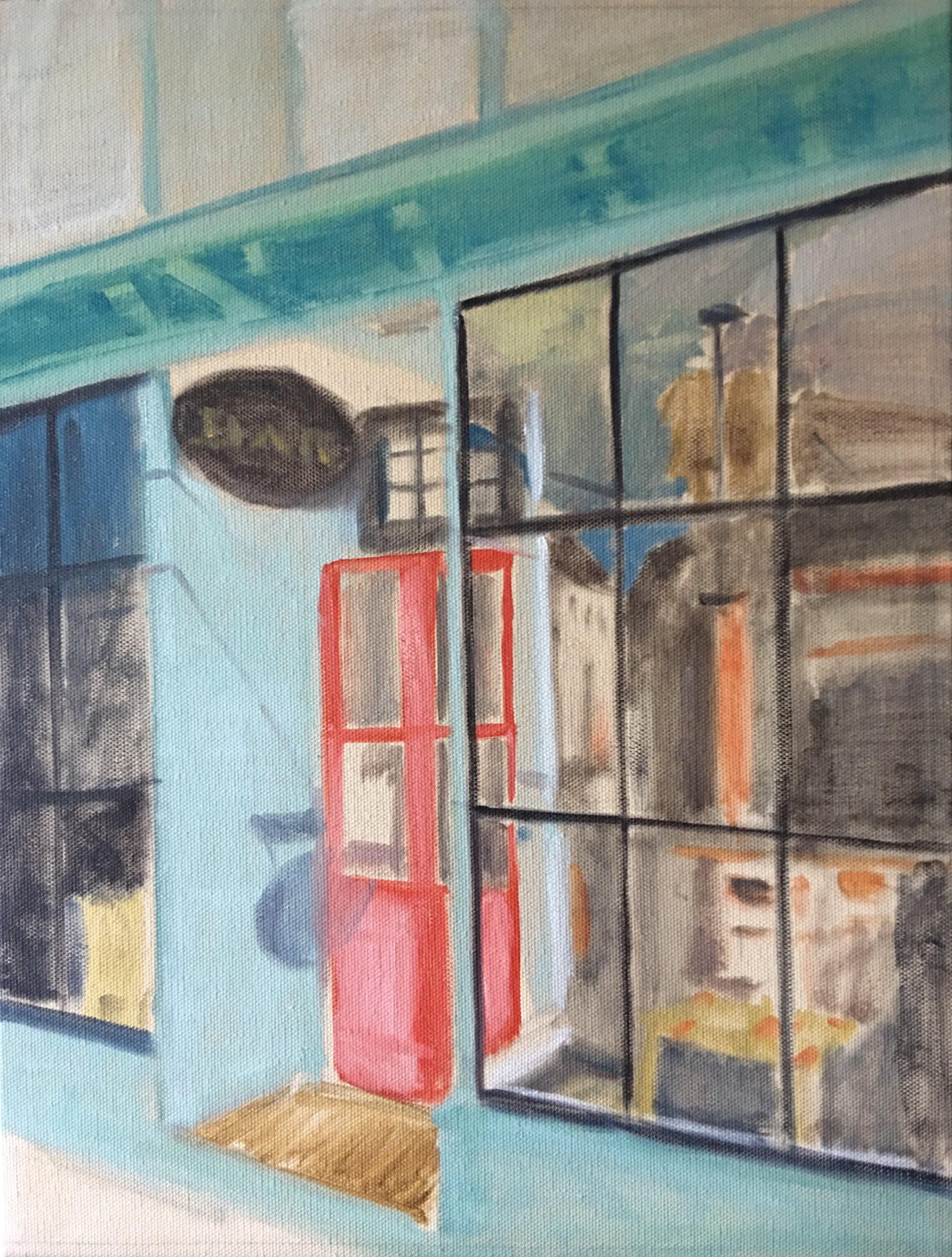My painting process developed with several influences, primary of which was economy. I couldn't afford supplies, and wouldn't know what to buy anyway, but I had mentioned to a friend on a trip to an art store that I felt like I should be a painter. Soon thereafter, she lost a friend who painted, and I received a generous bounty of paints, brushes and canvasses. With no previous experience in art, and no art classes, I immediately set up a still-life of a silver coffee pot to use all my new supplies. No, it didn't go well, and I gave up for a couple years, but that's another post.
When I did attempt painting again, it became quickly apparent that I would go through a lot of paint just experimenting. Because of this, I decided to thin the paint and make it stretch. Also, I was impatient and lazy, not realizing that thick paint can be very useful. But, so can thin layers.
Another thing I did due to my laziness, was to find a dominant color in the image so I could work several areas of the canvas at once, then add other areas of general color until a rough image starts to take shape. Little did I know, this is the process called dead-coloring, or first painting. It gives the opportunity to fix the drawing.
Going to classes at the Academy of Realist Art in Boston taught me further refinement of this technique, using a toned wash on the canvas as a starting point, and getting an accurate sketch on the canvas before painting. Oh, and drawing. That's what they taught me the most and that is the key to it all.
Here is my newest piece, the bar next to Cafe Heaven in Provincetown. I think it's a new storefront now. I like the anonymity.



